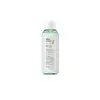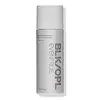What's inside
What's inside
 Key Ingredients
Key Ingredients

 Benefits
Benefits

 Concerns
Concerns

 Ingredients Side-by-side
Ingredients Side-by-side

Water
Skin ConditioningButylene Glycol
HumectantVitis Vinifera Fruit Extract
Skin ConditioningAlcohol
AntimicrobialSalicylic Acid
MaskingTromethamine
BufferingSodium Citrate
BufferingPPG-13-Decyltetradeceth-24
Emulsifying1,2-Hexanediol
Skin ConditioningPolyglyceryl-10 Laurate
Skin ConditioningHydroxyacetophenone
AntioxidantGluconolactone
Skin ConditioningBetaine
HumectantSalix Alba Bark Extract
AstringentPanthenol
Skin ConditioningParfum
MaskingAllantoin
Skin ConditioningCitric Acid
BufferingSodium Phytate
Prunus Mume Fruit Extract
HumectantLactuca Scariola Sativa Leaf Extract
Skin ConditioningCucumis Sativus Fruit Extract
EmollientEnantia Chlorantha Bark Extract
Skin ConditioningArgania Spinosa Kernel Oil
EmollientBeta-Glucan
Skin ConditioningSodium Hyaluronate
HumectantCaprylyl Glycol
EmollientSesamum Indicum Seed Oil
EmollientHydroxypropyltrimonium Hyaluronate
Beta-Sitosterol
Emulsion StabilisingSerenoa Serrulata Fruit Extract
Skin ConditioningOleanolic Acid
Skin ConditioningSodium Acetylated Hyaluronate
HumectantHydrolyzed Hyaluronic Acid
HumectantTocopherol
AntioxidantHyaluronic Acid
HumectantSodium Hyaluronate Crosspolymer
HumectantHydrolyzed Sodium Hyaluronate
Skin ConditioningPotassium Hyaluronate
Skin ConditioningWater, Butylene Glycol, Vitis Vinifera Fruit Extract, Alcohol, Salicylic Acid, Tromethamine, Sodium Citrate, PPG-13-Decyltetradeceth-24, 1,2-Hexanediol, Polyglyceryl-10 Laurate, Hydroxyacetophenone, Gluconolactone, Betaine, Salix Alba Bark Extract, Panthenol, Parfum, Allantoin, Citric Acid, Sodium Phytate, Prunus Mume Fruit Extract, Lactuca Scariola Sativa Leaf Extract, Cucumis Sativus Fruit Extract, Enantia Chlorantha Bark Extract, Argania Spinosa Kernel Oil, Beta-Glucan, Sodium Hyaluronate, Caprylyl Glycol, Sesamum Indicum Seed Oil, Hydroxypropyltrimonium Hyaluronate, Beta-Sitosterol, Serenoa Serrulata Fruit Extract, Oleanolic Acid, Sodium Acetylated Hyaluronate, Hydrolyzed Hyaluronic Acid, Tocopherol, Hyaluronic Acid, Sodium Hyaluronate Crosspolymer, Hydrolyzed Sodium Hyaluronate, Potassium Hyaluronate
Water
Skin ConditioningButylene Glycol
HumectantAloe Barbadensis Leaf Juice
Skin ConditioningGlycerin
HumectantPolymethylsilsesquioxane
Phenylpropanol
MaskingGluconolactone
Skin ConditioningMandelic Acid
AntimicrobialAmmonium Acryloyldimethyltaurate/Carboxyethyl Acrylate Crosspolymer
Salicylic Acid
MaskingSodium Polyacrylate
AbsorbentAminomethyl Propanol
BufferingEthylhexylglycerin
Skin ConditioningLactobionic Acid
BufferingCaprylyl Glycol
EmollientPropanediol
SolventCitrus Glauca Fruit Extract
HumectantMicrocitrus Australasica Fruit Extract
Microcitrus Australis Fruit Extract
Skin ConditioningSodium Hyaluronate Crosspolymer
HumectantGlyceryl Polyacrylate
Citric Acid
BufferingPotassium Sorbate
PreservativeSodium Benzoate
MaskingTocopherol
AntioxidantWater, Butylene Glycol, Aloe Barbadensis Leaf Juice, Glycerin, Polymethylsilsesquioxane, Phenylpropanol, Gluconolactone, Mandelic Acid, Ammonium Acryloyldimethyltaurate/Carboxyethyl Acrylate Crosspolymer, Salicylic Acid, Sodium Polyacrylate, Aminomethyl Propanol, Ethylhexylglycerin, Lactobionic Acid, Caprylyl Glycol, Propanediol, Citrus Glauca Fruit Extract, Microcitrus Australasica Fruit Extract, Microcitrus Australis Fruit Extract, Sodium Hyaluronate Crosspolymer, Glyceryl Polyacrylate, Citric Acid, Potassium Sorbate, Sodium Benzoate, Tocopherol
Ingredients Explained
These ingredients are found in both products.
Ingredients higher up in an ingredient list are typically present in a larger amount.
Butylene Glycol (or BG) is used within cosmetic products for a few different reasons:
Overall, Butylene Glycol is a safe and well-rounded ingredient that works well with other ingredients.
Though this ingredient works well with most skin types, some people with sensitive skin may experience a reaction such as allergic rashes, closed comedones, or itchiness.
Learn more about Butylene GlycolCaprylyl Glycol is a humectant and emollient, meaning it attracts and preserves moisture.
It is a common ingredient in many products, especially those designed to hydrate skin. The primary benefits are retaining moisture, skin softening, and promoting a healthy skin barrier.
Though Caprylyl Glycol is an alcohol derived from fatty acids, it is not the kind that can dry out skin.
This ingredient is also used as a preservative to extend the life of products. It has slight antimicrobial properties.
Learn more about Caprylyl GlycolCitric Acid is an alpha hydroxy acid (AHA) naturally found in citrus fruits like oranges, lemons, and limes.
Like other AHAs, citric acid can exfoliate skin by breaking down the bonds that hold dead skin cells together. This helps reveal smoother and brighter skin underneath.
However, this exfoliating effect only happens at high concentrations (20%) which can be hard to find in cosmetic products.
Due to this, citric acid is usually included in small amounts as a pH adjuster. This helps keep products slightly more acidic and compatible with skin's natural pH.
In skincare formulas, citric acid can:
While it can provide some skin benefits, research shows lactic acid and glycolic acid are generally more effective and less irritating exfoliants.
Most citric acid used in skincare today is made by fermenting sugars (usually from molasses). This synthetic version is identical to the natural citrus form but easier to stabilize and use in formulations.
Read more about some other popular AHA's here:
Learn more about Citric AcidGluconolactone is a PHA. PHAs are a great gentle alternative to traditional AHAs.
When applied, Gluconolactone has the same affect on skin as AHAs such as lactic acid. It helps dissolve the dead skin cells in the top layer of your skin. This improves texture and brightens the skin.
PHAs are more gentle than AHAs due to their larger structure. They do not penetrate as deeply as AHAs and take a longer time to dissolve dead cells. Studies show PHAs do not cause as much irritation.
Gluconolactone has some interesting properties:
In a 2004 study, Gluconolactone was found to prevent UV damage in mouse skin cells and has not been found to increase sun sensitivity. However, we still recommend wearing SPF daily.
This ingredient is is an created by reacting gluconic acid with an alcohol.
Learn more about GluconolactoneSalicylic Acid (also known as beta hydroxy acid or BHA) is a well-known ingredient for treating skin that struggles with acne and clogged pores. It exfoliates both the skin's surface and deep within the pores to help clear out buildup, control oil, and reduce inflammation.
Unlike AHAs (alpha hydroxy acids), salicylic acid is oil-soluble. This allows it to penetrate into pores which makes it especially effective for treating blackheads and preventing future breakouts.
Salicylic acid is also known for its soothing properties. It has a similar structure to aspirin and can calm inflamed or irritated skin, making it a good option for acne-prone skin that is also sensitive.
Concentrations of 0.5-2% are recognized by the U.S. FDA as an over-the-counter topical acne product.
It can cause irritation and/or dryness if one's skin already has a compromised moisture barrier, so it's best to focus on repairing that before introducing this ingredient into your routine.
While salicylic acid does not increase sun sensitivity, it’s still important to wear sunscreen daily to protect your skin.
If you are looking for the ingredient called BHA or Butylated Hydroxyanisole, click here.
Learn more about Salicylic AcidSodium Hyaluronate Crosspolymer is a type of hyaluronic acid. In fact, it is modified version of hyaluronic acid.
The structure of Sodium Hyaluronate Crosspolymer allows it to stay in the skin's top layer for a longer period of time. This allows for even more hydration and humectant action than hyaluronic acid.
These are some other common types of Hyaluronic Acid:
Learn more about Sodium Hyaluronate CrosspolymerTocopherol (also known as Vitamin E) is a common antioxidant used to help protect the skin from free-radicals and strengthen the skin barrier. It's also fat soluble - this means our skin is great at absorbing it.
Vitamin E also helps keep your natural skin lipids healthy. Your lipid skin barrier naturally consists of lipids, ceramides, and fatty acids. Vitamin E offers extra protection for your skin’s lipid barrier, keeping your skin healthy and nourished.
Another benefit is a bit of UV protection. Vitamin E helps reduce the damage caused by UVB rays. (It should not replace your sunscreen). Combining it with Vitamin C can decrease sunburned cells and hyperpigmentation after UV exposure.
You might have noticed Vitamin E + C often paired together. This is because it is great at stabilizing Vitamin C. Using the two together helps increase the effectiveness of both ingredients.
There are often claims that Vitamin E can reduce/prevent scarring, but these claims haven't been confirmed by scientific research.
Learn more about TocopherolWater. It's the most common cosmetic ingredient of all. You'll usually see it at the top of ingredient lists, meaning that it makes up the largest part of the product.
So why is it so popular? Water most often acts as a solvent - this means that it helps dissolve other ingredients into the formulation.
You'll also recognize water as that liquid we all need to stay alive. If you see this, drink a glass of water. Stay hydrated!
Learn more about Water